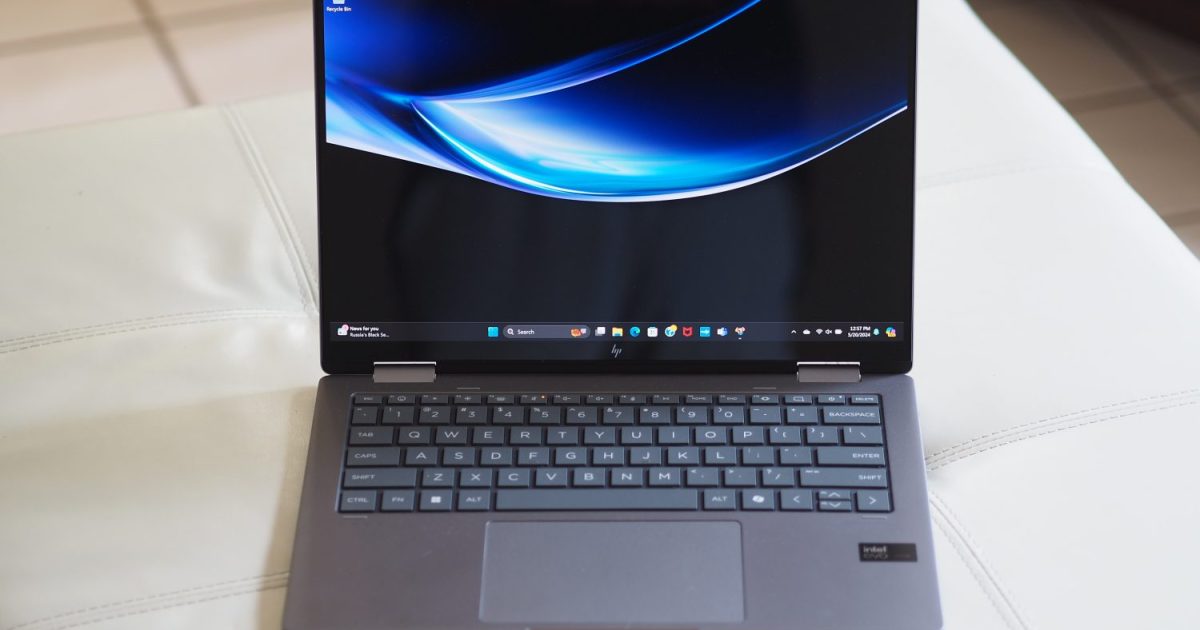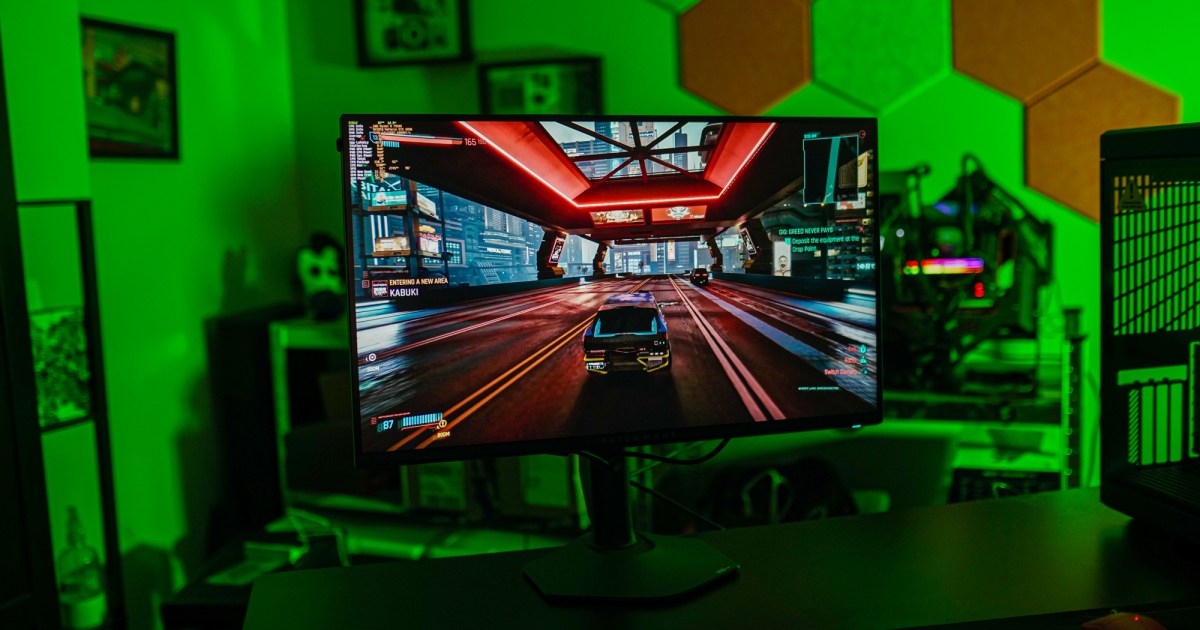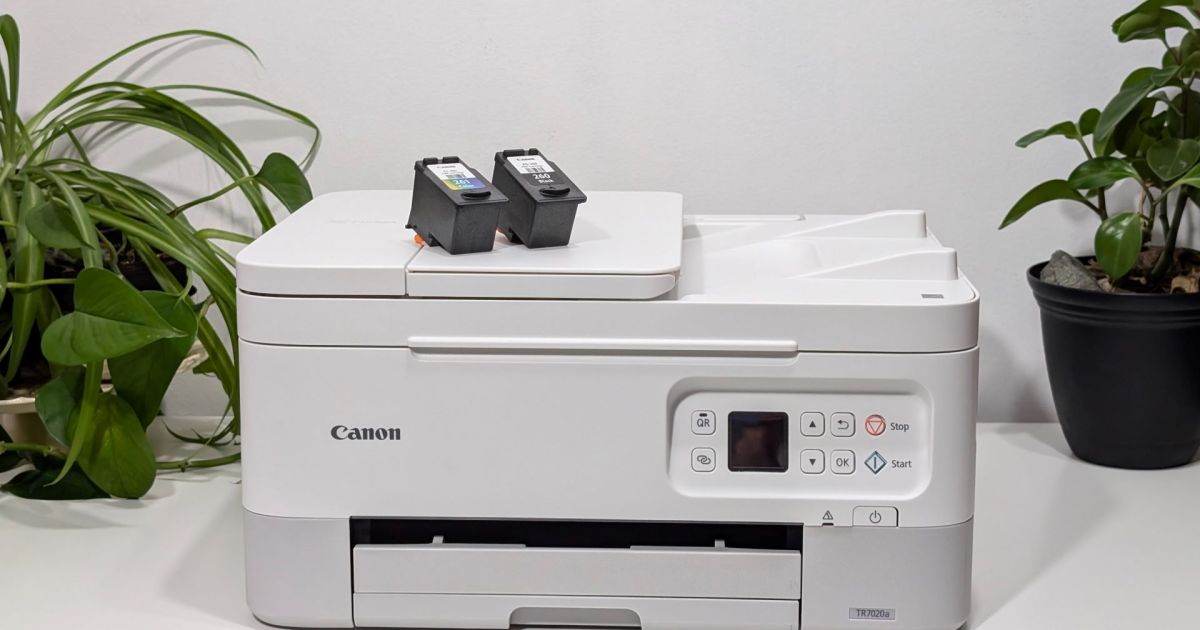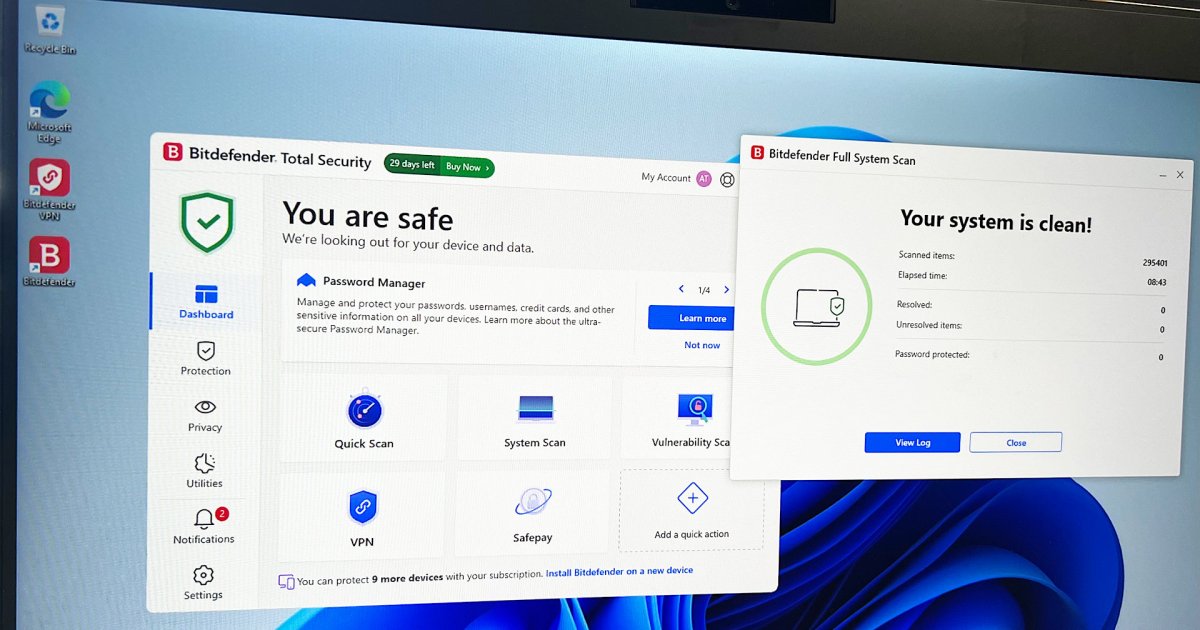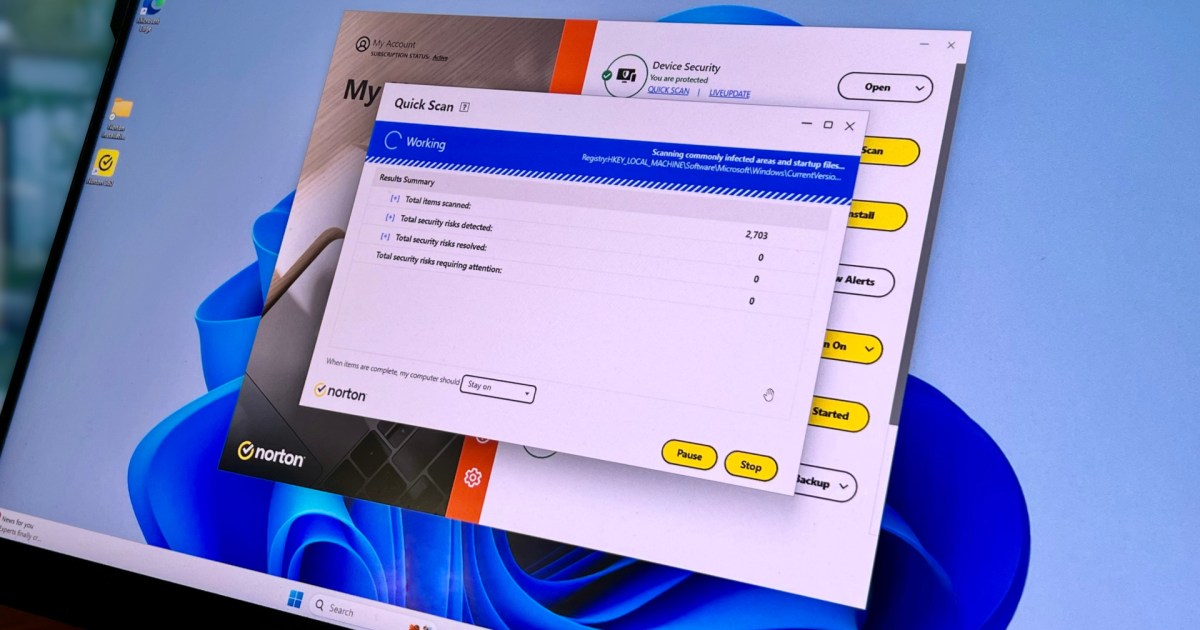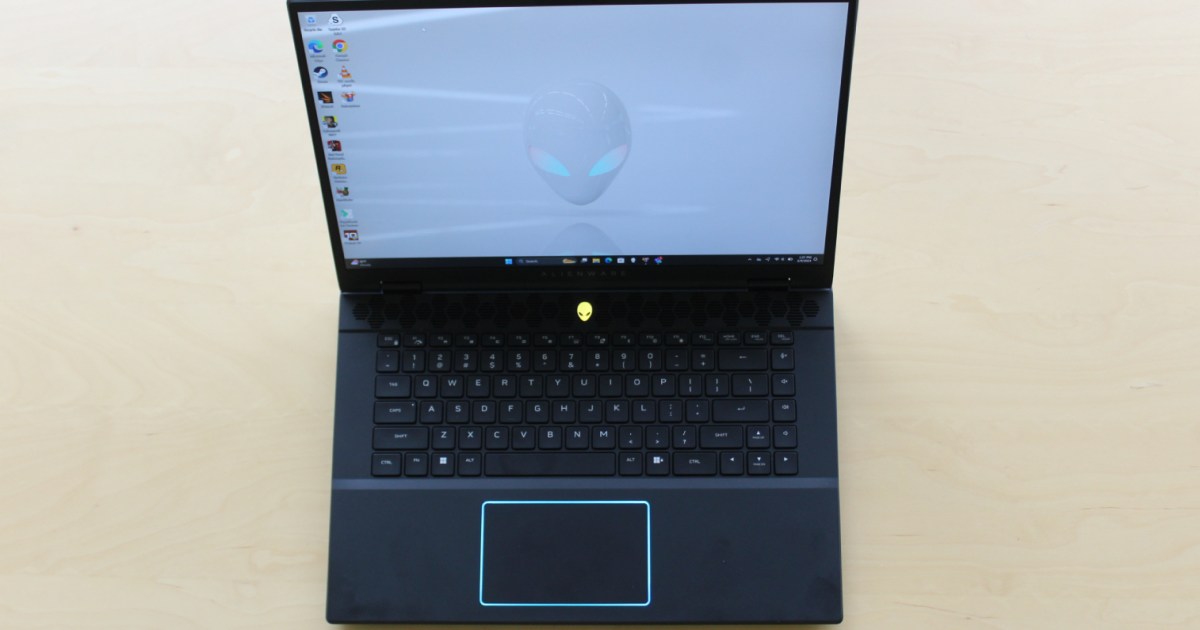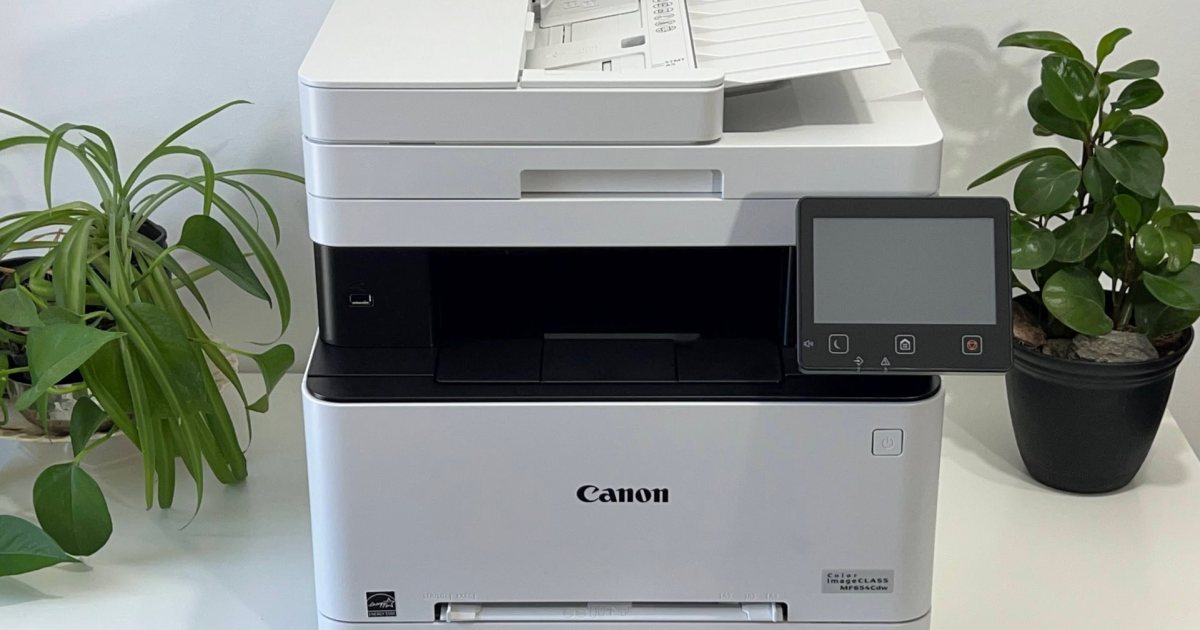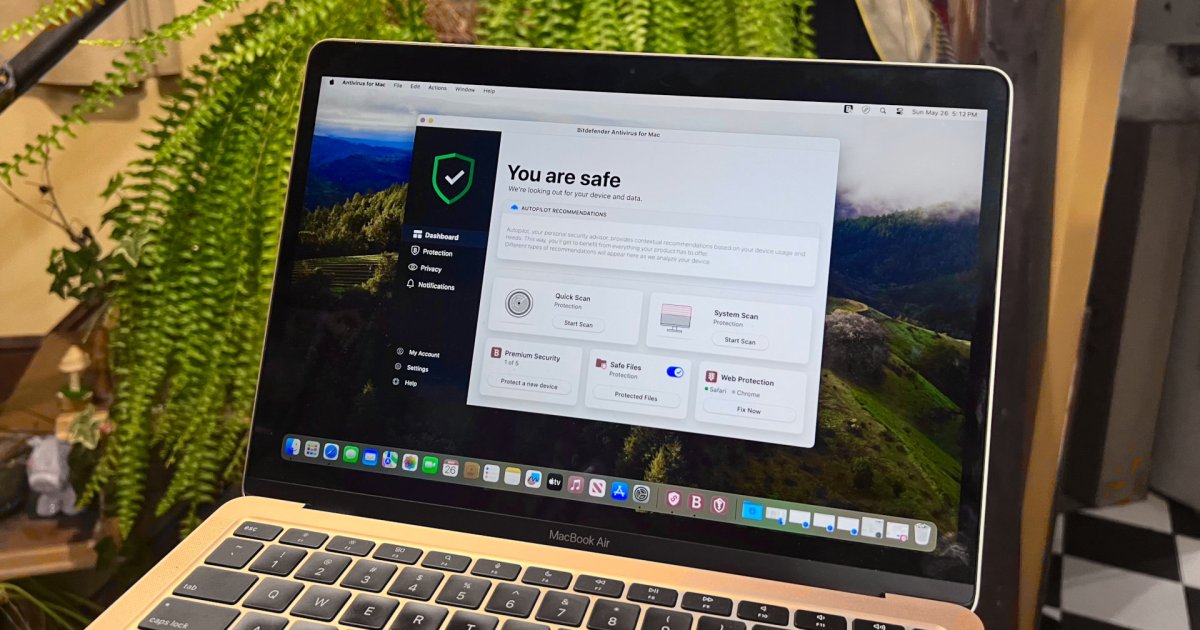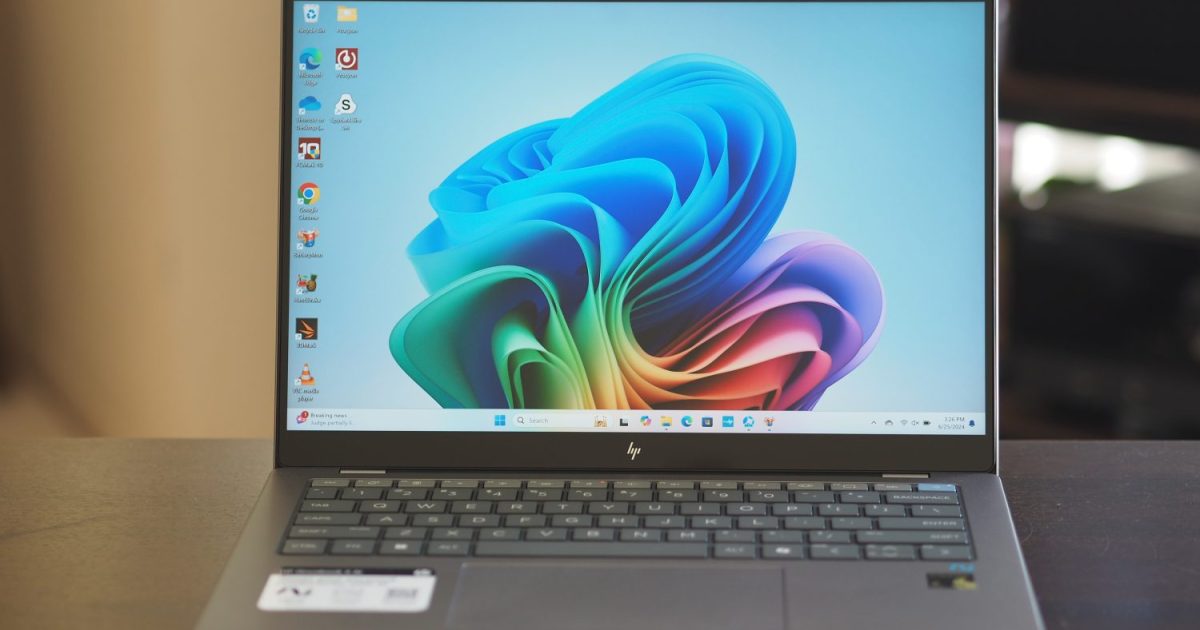The sub-$1,000 laptop market is flourishing, with numerous options offering powerful performance, robust build quality, and even stunning OLED displays. The 2024 HP Envy x360 14 aims to compete in this segment, boasting a reasonable price, HP’s signature solid construction, and the increasingly popular OLED display option. Unfortunately, it falls short due to a lower-power processor that compromises performance without delivering the expected battery life gains. This makes it a less appealing choice, especially with the anticipation of HP’s revamped Copilot+ lineup, which promises to address these shortcomings.
Specifications and Configurations
| Feature | HP Envy x360 14 (2024) |
|---|---|
| Dimensions | 12.34 x 8.62 x 0.67 inches |
| Weight | 3.08 pounds |
| Processor | Intel Core Ultra 5 125U / Core Ultra 7 155U |
| Graphics | Intel Graphics |
| RAM | 16GB / 32GB |
| Display | 14.0-inch 16:10 WUXGA (1920 x 1200) IPS / 14.0-inch 16:10 2.8K (2880 x 1800) OLED, 120Hz |
| Storage | 512GB / 1TB / 2TB |
| Touchscreen | Yes |
| Ports | 2 x USB-A, 1 x USB-C, 1 x USB-C with Thunderbolt 4, 1 x 3.5mm audio |
| Wireless | Wi-Fi 6E/Bluetooth 5.3 / Wi-Fi 7/Bluetooth 5.4 |
| Webcam | 5MP with infrared (Windows Hello) |
| Operating System | Windows 11 |
| Battery | 59 watt-hour |
| Price | Starting at $750 |
At the time of this review, HP is offering the Envy x360 14 at discounted prices. The base configuration starts at $750 (reduced from $960) and features an Intel Core Ultra 5 125U, 16GB of RAM, a 512GB SSD, and a 14.0-inch WUXGA IPS display. The reviewed configuration, equipped with a Core Ultra 7 155U, 16GB of RAM, a 1TB SSD, and a 14.0-inch 2.8K OLED display, is currently priced at $1,170 (down from $1,380). A higher-end model with 32GB of RAM and a 2TB SSD is available for $1,480 (reduced from $1,690).
While the list prices are decent, the sale prices make the Envy x360 14 more competitive against rivals like the Asus Zenbook 14 OLED Q425. It’s also notably less expensive than HP’s premium Spectre x360 14.
Design
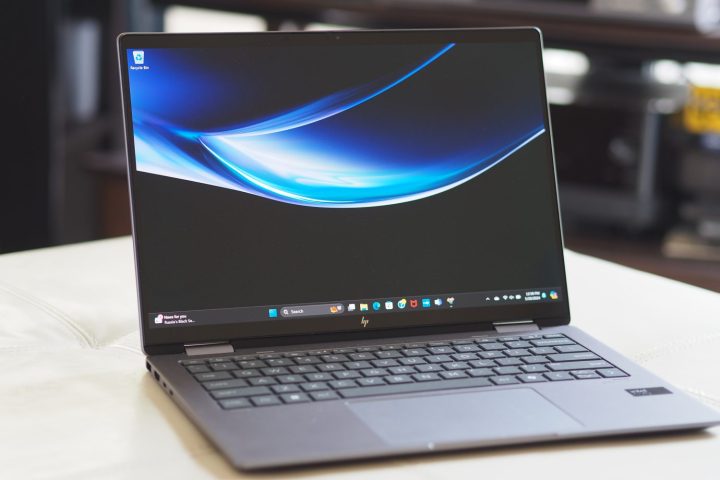 alt text: HP Envy x360 14 (2024) open in clamshell mode showcasing its design and keyboard.
alt text: HP Envy x360 14 (2024) open in clamshell mode showcasing its design and keyboard.
HP’s Spectre convertible 2-in-1s, especially the Spectre x360 14, have consistently impressed with their modern and sleek designs, featuring rounded edges and strategically placed notches. The Envy x360 14, however, adopts a more conventional approach. Its design is characterized by conservative edges, understated colors devoid of chrome accents, and a keyboard in a slightly contrasting shade of gray. While not unattractive, especially compared to the similarly minimalist Zenbook 14 Q425, the Envy x360 14 lacks the premium aesthetic of its Spectre counterpart, showcasing HP’s deliberate differentiation between the two lines.
The build quality remains commendable, thanks to a durable all-aluminum chassis and lid that resist bending and flexing. This reinforces the trend of excellent build quality becoming increasingly accessible in this price range. The hinge requires two hands to open, a common characteristic of convertible 2-in-1s designed for various usage modes (clamshell, tent, media, and tablet).
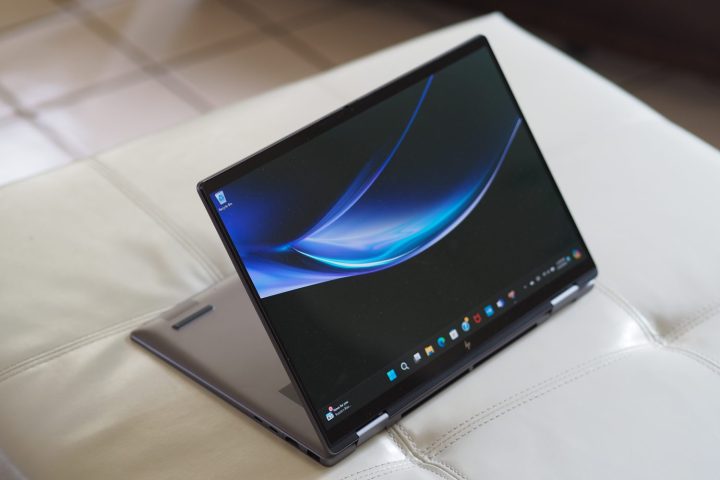 alt text: HP Envy x360 14 (2024) in media mode, demonstrating its 2-in-1 functionality.
alt text: HP Envy x360 14 (2024) in media mode, demonstrating its 2-in-1 functionality.
In terms of size and weight, the Envy x360 14 is unremarkable. At 0.67 inches thick, it’s not as slim as the MacBook Air (0.44 inches for the 13-inch model and 0.45 inches for the 15-inch model). Its weight is also average. Nevertheless, it offers sufficient portability with a reasonably compact footprint and slim bezels.
Keyboard, Touchpad, and Webcam
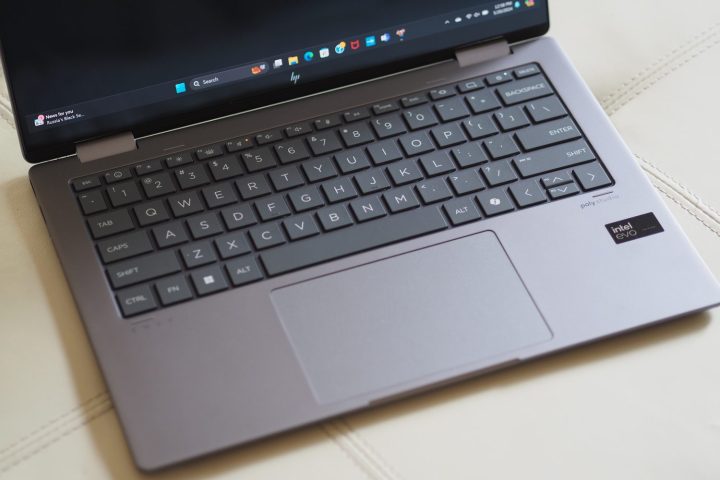 alt text: Close-up view of the HP Envy x360 14's keyboard and touchpad, highlighting key layout and size.
alt text: Close-up view of the HP Envy x360 14's keyboard and touchpad, highlighting key layout and size.
The keyboard features a slightly different shade of gray than the chassis, with large, bold lettering for easy readability even without the backlight. The keycaps are well-sized with excellent spacing and a standard layout. The keys themselves offer a light, snappy feel with a crisp bottoming action, providing a comfortable typing experience. While Apple’s Magic Keyboard remains a preferred choice for some, the Envy x360 14’s keyboard is among the best in its price range. The inclusion of a Microsoft Copilot button provides quick access to the cloud-based AI service.
The touchpad is a mechanical clickpad that’s large enough for comfortable navigation. While responsive, the click buttons are somewhat loud. Haptic touchpads, like the one found on the Spectre x360 14, offer a more premium experience but are still uncommon in this price segment. As a 2-in-1, the Envy x360 14 includes a touch display and supports HP’s active pen (sold separately).
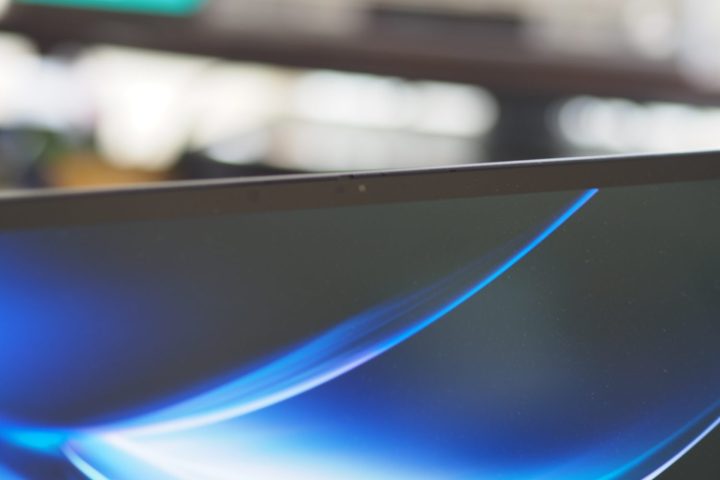 alt text: HP Envy x360 14 (2024) webcam located above the display, featuring Windows Hello functionality.
alt text: HP Envy x360 14 (2024) webcam located above the display, featuring Windows Hello functionality.
The 5MP high-resolution webcam delivers a quality image for video conferencing. Leveraging Intel Meteor Lake’s capabilities, it supports AI features like Microsoft Studio Effects for background enhancements. HP also includes a trial of Otter.ai for transcribing and summarizing video calls. The webcam incorporates an infrared camera for Windows Hello facial recognition and HP’s user presence detection, which automatically locks and unlocks the laptop based on user proximity.
Connectivity
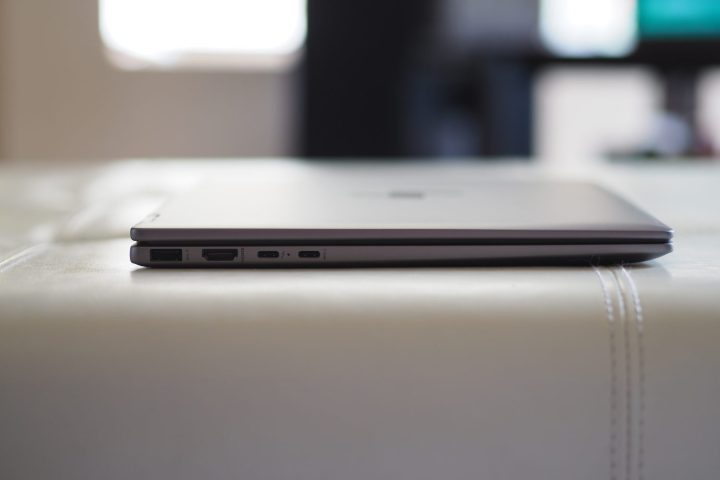 alt text: Left side view of the HP Envy x360 14 showcasing its port selection, including USB-C and USB-A.
alt text: Left side view of the HP Envy x360 14 showcasing its port selection, including USB-C and USB-A.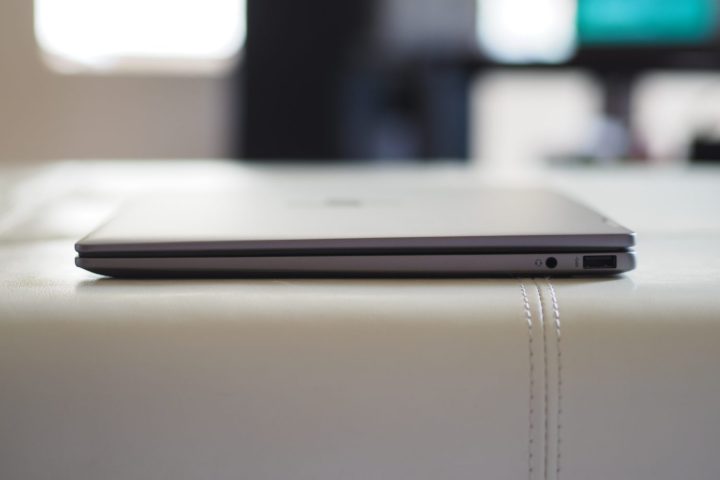 alt text: Right side view of the HP Envy x360 14 highlighting its ports, including the power button and audio jack.
alt text: Right side view of the HP Envy x360 14 highlighting its ports, including the power button and audio jack.
The Envy x360 14 offers a decent selection of ports, including both legacy USB-A and modern Thunderbolt 4. However, only one of the two USB-C ports supports Thunderbolt 4, and since one is used for charging, this can limit flexibility. Disappointingly, there’s no SD card reader, a feature that, while increasingly omitted, would have been a valuable addition. Wireless connectivity options include Wi-Fi 6E and Bluetooth 5.3 or the latest Wi-Fi 7 and Bluetooth 5.4 standards, offering future-proofing for those seeking the fastest connectivity.
Performance
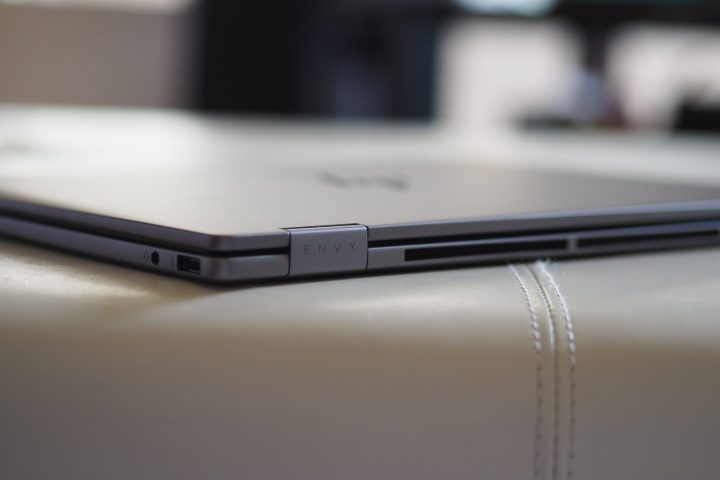 alt text: Rear view of the HP Envy x360 14, displaying its ventilation grilles designed for heat dissipation.
alt text: Rear view of the HP Envy x360 14, displaying its ventilation grilles designed for heat dissipation.
The Envy x360 14 is one of the first laptops reviewed with the 15-watt Intel Core Ultra 7 155U. This 12-core (2 Performance, 8 Efficient, and 2 Low Power Efficient), 14-thread processor with integrated Intel Graphics pales in comparison to the more common 28-watt Core Ultra 7 155H, which boasts 16 cores (6 Performance, 8 Efficient, and 2 Low Power Efficient), 22 threads, and faster Intel Arc integrated graphics. Benchmark results reflect this difference, with the Envy x360 14 exhibiting significantly slower performance than competitors across various tests.
| Benchmark | HP Envy x360 14 (Core Ultra 7 155U) | Lenovo Yoga Book 9i (Core i7-1355U) | HP Spectre x360 14 (Core Ultra 7 155H) | Dell Inspiron 14 Plus 2024 (Core Ultra 7 155H) | Asus Zenbook 14 Q425 (Core Ultra 7 155H) | Lenovo Yoga 9i Gen 8 (Core i7-1360P) | Apple MacBook Air (M3) |
|---|---|---|---|---|---|---|---|
| Geekbench 6 (single/multi) | 2,130 / 8,175 (Bal), 2,229 / 8,298 (Perf) | 2,236 / 6,332 (Bal), 2,400 / 8,159 (Perf) | 2,234 / 11,878 (Bal), 2,246 / 11,821 (Perf) | 2,097 / 11,105 (Bal), 2,111 / 11,883 (Perf) | 2,257 / 11,820 (Bal), 2,279 / 11,806 (Perf) | 2,509 / 10,746 (Bal), 2,553 / 11,324 (Perf) | 3,102 / 12,078 (Bal) |
| Handbrake (seconds) | 139 (Bal), 120 (Perf) | 181 (Bal), 118 (Perf) | 138 (Bal), 83 (Perf) | 72 (Bal), 70 (Perf) | 94 (Bal), 82 (Perf) | N/A | 109 (Bal) |
| Cinebench R23 (single/multi) | 1,713 / 6,751 (Bal), 1,766 / 8,146 (Perf) | 1,681 / 6,303 (Bal), 1,758 / 7,576 (Perf) | 1,750 / 9,832 (Bal) | 1,629 / 13,153 (Bal), 1,676 / 14,529 (Perf) | 1,653 / 9,156 (Bal), 1,635 / 12,130 (Perf) | 1,846 / 8,779 (Bal), 1,906 / 9,849 (Perf) | N/A |
| PCMark 10 Complete | 5,750 | 5,514 | 6,316 | 6,688 | 6,316 | 6,102 | N/A |
Battery Life
 alt text: Side view of the closed HP Envy x360 14, showcasing its slim profile and port placement.
alt text: Side view of the closed HP Envy x360 14, showcasing its slim profile and port placement.
The rationale behind opting for the less powerful Core Ultra 7 155U would typically be improved battery life. However, despite its 59 watt-hour battery, the Envy x360 14 delivers underwhelming battery life, even with the power-efficient processor. In tests, it performed worse than competitors using more powerful chipsets, some of which also had OLED displays.
| Test | HP Envy x360 14 (Core Ultra 7 155U) | Dell Inspiron 14 Plus 2024 (Core Ultra 7 155H) | HP Spectre x360 14 (Core Ultra 7 155H) | Asus Zenbook 14 Q425 (Core Ultra 7 155H) | Asus Zenbook 14 OLED 2023 (Ryzen 5 7530U) | Lenovo Yoga 9i Gen 8 (Core i7-1360P) | Apple MacBook Air (M3) |
|---|---|---|---|---|---|---|---|
| Web Browsing | 7 hours, 37 minutes | 10 hours, 24 minutes | 8 hours, 6 minutes | 12 hours, 25 minutes | 12 hours, 13 minutes | 7 hours, 41 minutes | 19 hours, 38 minutes |
| Video Playback | 9 hours, 30 minutes | 14 hours, 30 minutes | 13 hours, 3 minutes | 18 hours, 1 minute | 17 hours, 19 minutes | 13 hours, 25 minutes | N/A |
Display
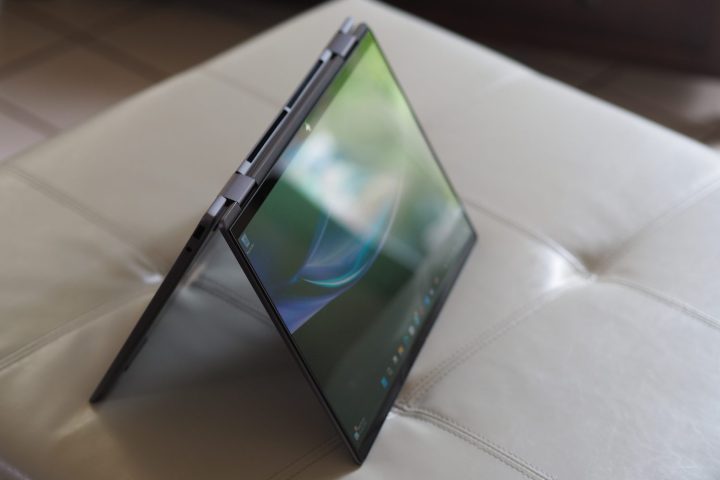 alt text: HP Envy x360 14 (2024) in tent mode, showcasing the flexibility of its 2-in-1 design and the vibrant OLED display.
alt text: HP Envy x360 14 (2024) in tent mode, showcasing the flexibility of its 2-in-1 design and the vibrant OLED display.
While performance and battery life disappoint, the optional high-end 14.0-inch 2.8K (2880 x 1800) OLED display with a 120Hz refresh rate is a highlight. The upgrade from the FHD+ IPS panel is well worth the additional cost, providing a vibrant and immersive visual experience. Color accuracy is excellent, with wide color gamut coverage (100% sRGB, 98% AdobeRGB, and 100% DCI-P3) and a low DeltaE of 0.82. The OLED technology also delivers perfect blacks and exceptional contrast. While HDR performance is good, it doesn’t quite match the brilliance of Apple’s mini-LED displays. The audio, delivered by downward-firing speakers, is average and best suited for casual use. Headphones are recommended for a richer audio experience.
Conclusion
HP Envy laptops typically offer a compelling balance of affordability, build quality, and performance. The Envy x360 14 (2024), however, falls short in the performance department, compounded by disappointing battery life. In a highly competitive market, these shortcomings are difficult to overlook.



